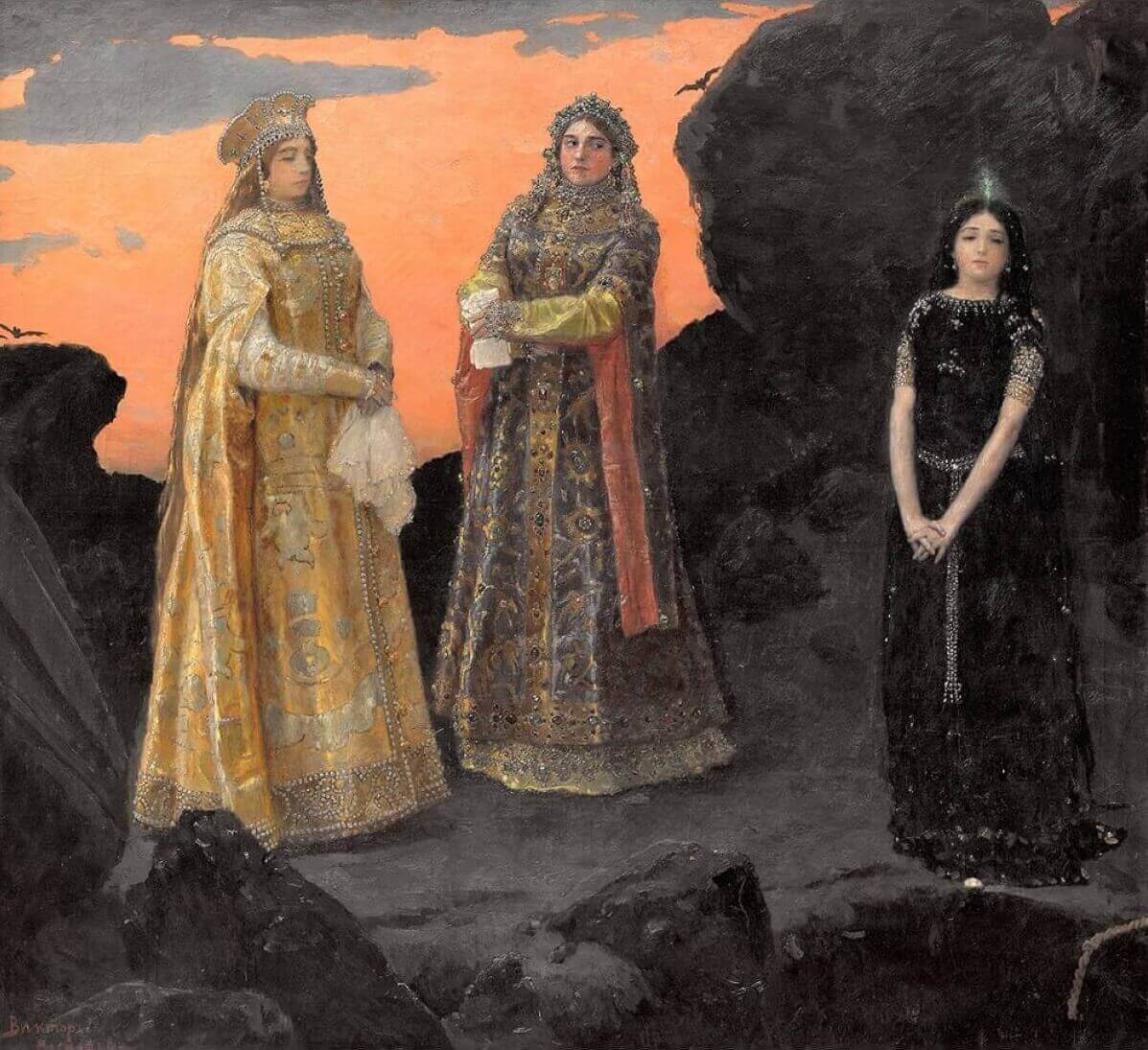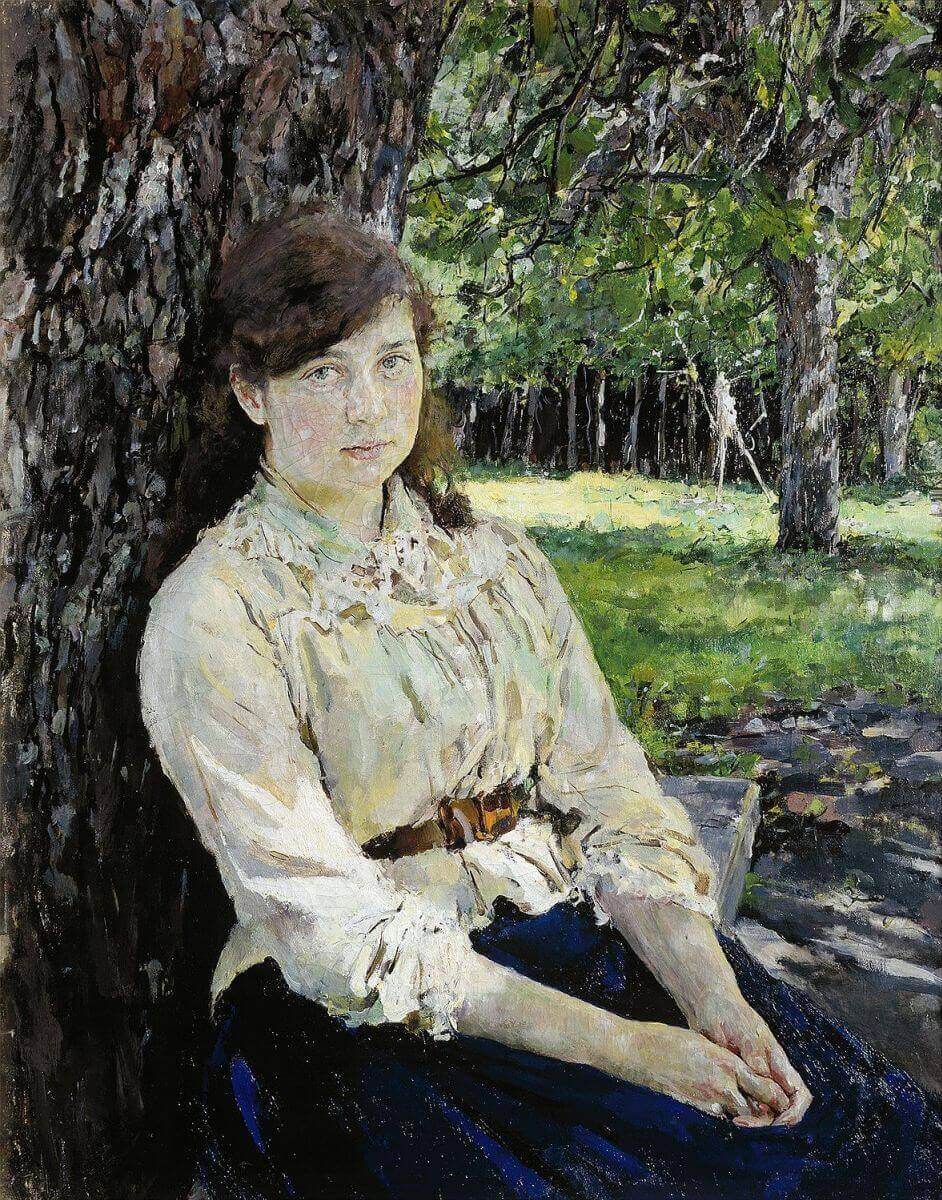Tretyakov searched for sincerity, truth and beauty in art, rejecting strictly academic or pretentious pieces
By Oksana Kopenkina
The State Tretyakov Gallery in Moscow is the biggest museum of Russian art in the world. Its history begins with a private collection made by Pavel Tretyakov (1832–1898). He had a humble character, democratic views, and a unique artistic taste. When Tretyakov decided to make his collection public and granted it to Moscow, Alexander I offered him a noble title, but he refused, considering himself unworthy. Since then, the collection was greatly expanded, but it remains true to the principles of its original owner.
Tretyakov searched for sincerity, truth and beauty in art, rejecting strictly academic or pretentious pieces, and though he didn’t always pay much, artists considered an honor to have him buy their works.
This article will focus on seven masterpieces of the Tretyakov Gallery. Five of them were once acquired by Pavel Tretyakov himself, and two ended up in the museum after the death of the patron, but they fit perfectly into his collection.
Ivan Shishkin. Rye
This painting shows a magnificent contrast between flat yellow rye and the tall, dark, century-old pines. There are also countless little details: low-flying birds, people in the distance with scythes.
Shishkin was often criticized for his almost photographical realism – every blade of grass, leaf and speck of dirt is painted separately and easily visible. But this painting is more than a mere copy nature.
Among these grand pines stands a dead, bare tree, killed, perhaps, by a sudden lightning strike. The artist shows that any might can be broken in a blink of an eye: this painting was made soon after the death of his wife and two children. It was probably a way to release his feelings while underlining the beauty of Russian nature.
Arhip Kuindzhi. After the Rain

The main character in every Kuinzhi’s work is light. He makes it almost magical in its beauty.
“After the Rain” shows nature’s play of paint and color masterfully. After a horrible storm, the sky is still brown and purple. But the first rays are poking through, and there will soon be a rainbow. The grass is fresh and green.
Kuindzhi usually painted from nature, but not always: it’s doubtful that a horse would be left out in the storm, as here. That figure was added to liven the scene and to increase the contrast between the sky and the grass.
Kuindzhi was a very original person as well as a genius painter. Unlike many of his colleagues, he earned quite a lot of money on real estate, but lived very modestly, spending most of his earnings on charity.
Viktor Vasnetsov. Three Princesses of the Underworld

Vasnetsov created this painting as a special commission from Savva Morozov for the station of the Donetsk railway that specialized in transporting coal, ore, and other metals and minerals. It is based on an ancient folk tale about the three princesses that rule underground – gold, silver and copper. He altered them a bit, leaving only gold and adding a diamond and coal princess.
The maiden in black -coal- is the youngest and has the most modern, humble attire, since the coal industry appeared much later than the others and brings a different type of good to people. She is an outlaw among them, and they look at her from above.
Tretyakov bought many of Vasnetsov’s works. They had similar characters and were good friends. When Vasnetsov first applied for the Academy of Arts, he was so certain he failed the exam that he didn’t stay to find out the result. Imagine his surprise when he returned the following year to try again and discovered that he passed the first time!
Ilya Repin. Dragonfly
A young child sits on the fence swinging her legs with the crickets and bumblebees buzzing around her – this is “The Dragonfly”, so light and cheerful that it seems like a French impressionistic piece.
Surprisingly, Repin disliked impressionism, considering their works shallow and plottless. But every time he painted children, he involuntarily used their style. There is no other way to recreate a second – the look of her blue plaited dress, or the wings of a dragonfly that stopped for a second before lifting off somewhere new.
This is a portrait of Repin’s oldest daughter Vera, who he himself called a dragonfly.
Valentin Serov. Girl Illuminated by the Sun

This painting by Serov is also impressionistic. This splendid weave of light and shadow, the bright meadow is opposed to the deep dark bark and the girl’s blue skirt.
Serov considered this his best piece, although he was only 23 when he painted it. He claimed that he tried all his life to make something like it, but failed.
The creation was long and tedious: Valentin made his cousin, Maria Simonovich, pose every day for several hours during three months. He was constantly unsatisfied and worked until she escaped to Saint-Petersburg to attend university.
She later admitted that she left partly because she feared Serov will ruin all he’s done with constant corrections. She herself was a talented sculptor and knew well that better is good’s worst enemy.
Perhaps she was right: “Girl Illuminated by the Sun” is a recognized masterpiece and, among Serov’s paintings, is second in popularity only to “Girl with Peaches”.
Isaac Levitan. Above the Eternal Peace
“Above the Eternal Peace” is perhaps the most Russian and philosophical of all Levitan’s works. The grand opening on the river shows how fragile and short human life is, a symbol of which is the faint light inside the church.
Levitan highly valued this piece, considering it a reflection of his soul and character. But he also feared it, saying that this eternal coldness had “swallowed many generations and will swallow many more”.
Levitan was a melancholic person, prone to dark thoughts and actions. A year after finishing this landscape he committed a demonstrative suicide attempt, worn out by his turbulent personal life: two women – a mother and her daughter- fell in love with him at the same time.
This painting can be seen as a test for your life position. Optimists generally feel inspired by this feeling of freedom, vast open space; pessimists, on the other hand, feel worthless and small beside it.
Mikhail Vrubel. Lilacs
This is a painting of amazingly beautiful lilac plants. Vrubel made the clusters with a painting knife (a painting knife is a metal pallette that artists use to apply the base on the canvas). to achieve the crystal-like structure and texture. The color is so strange – pinks, blues and violets of all sorts – and there is so many flowers that we can almost smell them.
The girl in the foreground is ‘the lilac spirit’. We can only see her dark hair, big eyes and elegant hands, which underlines her irrationality. She was painted with a brush to stand out better.
Vrubel was trying to recreate a sensation of childhood, when everything seems unreal, fantastical and strange. You’re walking through the park late in the evening, and your imagination draws faces and silhouettes among the dark leaves… He retained this ability through his whole life, painting serafims, demons and different souls of nature.
But one time he didn’t find the way back. Soon after this piece was made, Vrubel began slowly losing his sanity until his death in 1910.




